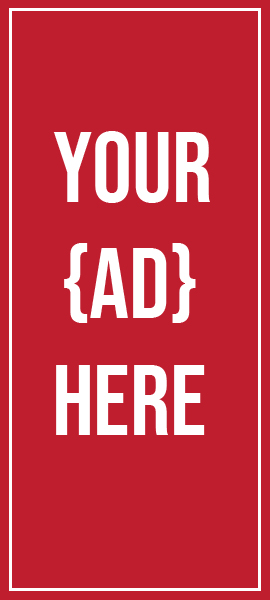
Non-Verbal Signals You Send
The most important thing in communication is hearing what isn’t said.
– Peter F. Drucker
Introduction
Understanding your body language and other physical cues is very important when you are presenting material in front of an audience. Your non-verbal communication skills are just as important as your verbal skills. Combined they make up the complete communication package that you use when you are presenting your material.
Non-verbal communication is the process of communication through sending and receiving wordless messages. It is the single most powerful form of communication. Nonverbal communication gives you cues about what is on another person’s mind, even more than voice or words can do.
One study at UCLA found that up to 93% of communication effectiveness is determined by nonverbal cues. Another study indicated that the impact of a performance was determined 7% by the words used, 38% by voice quality, and 55% by non-verbal communication.
Body language is a form of non-verbal communication involving the use of stylized gestures, postures, and physiologic signs, which act as cues to other people. Humans unconsciously send and receive non-verbal signals through body language all the time.Your words represent only 7% of the message that is received. Your body language represents 55%.But your body language must match the words used. If a conflict arises between your words and your body language, your body language governs.
Gestures
Gestures are an important tool for a presenter. They may offer a layer of meaning and emotion, demonstrate your dedication to conveying the idea, and make it simpler for your audience to follow along.The challenge is to make gestures support the speaking, reinforcing ideas. Below are several basic rules for the use of gestures:

- Make most gestures above the waist.(Those below the waist suggest failure, defeat, and despair.)
- Hold your forearms parallel to the waist, with your elbows about 3 inches from the side.
- Make your hands part of your forearm, opening them, with your fingers slightly curved. (Limp hands may indicate a lack of leadership.)
- Use both hands to convey power.
Gestures of direction, size, shape, description, feeling, and intensity are all effective when speaking. Here are some more tips for you to approach gestures for your presentation.
Find a comfortable spot for your hands to rest.
If you’re using a lectern, hold it on either side. You may let your arms naturally rest at your sides if you’re standing in the front of the room.Even if you are not feeling confident or at ease, a comfortable resting posture will make you look confident, at peace, and less worried.
Make images with your motions.
The easiest approach to get your hands and arms involved is to put them to work. Did profits increase in the most recent quarter? Then you may demonstrate it by raising your hand. Is it necessary for us to collaborate? You may extend out to the crowd and then draw your arms in.
The most attractive and useful gestures:
– Depict something
– Use not just the hands but also the upper body are involved. They are held apart from the torso, not close in with elbows bent.
– Are given with open hands, not fists or pointing fingers
Keep an eye out for number, timelines, and discernible trends.
Whether you’re practising a huge presentation or speaking on the spot, keep the following in mind:
Quantity: There are no guidelines for how much (or how little) to gesticulate. This is part of the art of public speaking and is affected by elements such as tone, topic matter, location, and personal speaking style.
Timing: This is more likely to occur while working from a script. Speakers must ensure that gestures occur when they feel natural. It’s better to leave it out, even if you’ve practised it, than to put it in late because you realised “oh, I was going to gesture with that.”
Recognisable patterns: Avoid using repetitive gestures since once an audience notices them, they can’t stop noticing them.
Speakers who accordion their hands in and out, pump a hand for emphasis, or roll over one hand in a type of throwaway gesture are common. A few of them will not wreck your presentation. However, using them again and over again, or in the same manner to punctuate a speech, the pattern will become
a distraction (and annoyance) for your audience.
Brief check
A gesture that supports your message is a simple approach to bring energy to your presentation.

Non-Verbal Signals
Signals are movements used to communicate needs, desires, and feelings to others. They are a form of expressive communication.Most of the signals you send to others are non-verbal.
People who are excellent communicators are sensitive to the power of the emotions and thoughts communicated non-verbally through signals. Although what you say is most important, the non-verbal messages you send can also have a potent effect on how well you message is received. How you look, how you move, and how you speak can make or break your presentation.
Types of Non-Verbal Signals: Other than gestures already discussed, signals include:
- Eye contact
- Posture
- Body movements
They all convey important information that isn’t put into words. By paying closer attention to other people’s nonverbal behaviours, you will improve your own ability to communicate nonverbally.
Tips to Improve Your Eye Contact
Consider your audience to be individual listeners: Take a minute before speaking to stop and survey the room for friendly faces. Connect with listeners who you believe will be interested in what you have to say, and concentrate on one audience member at a time. You’ll be more conversant and confident as a result.
Involve everyone in the discussion: The idea here is to make as many connections as possible. If you’re working with a huge crowd and it’s difficult to establish eye contact with everyone, split the audience into pieces and connect with just one individual from each group. Avoid using a pattern while moving your concentration from one location to another or you will seem unnatural.

Maintain eye contact for a short period of time in order to establish a connection, and then move on:
An interval of four to five seconds of eye contact is recommended because it takes no more than five seconds to make appropriate contact. The reason is, that five seconds is often the time it takes to complete a thought; there is little chance of losing attention if you follow this guideline. This may also help you slow down your pace of speech.
When a person seems uneasy, avert your gaze: Not everyone like being stared at in the eyes. While it is true that eye contact is a global communication signal, there are several exceptions to this rule that you should be aware of. Under certain conditions, some cultures and conventions consider eye contact to be disrespectful.
Spend extra time preparing your presentation: When attempting to find the perfect words to describe a notion, most speakers gaze to the ceiling or the floor. If you do this over an extended length of time, you risk losing touch with your audience. Better preparation means you spend more time and energy communicating and less time worrying about what to say.
Maintain eye contact while delivering all key lines: Nobody expects you to maintain eye contact for the whole of a 30-minute presentation. However, be sure to make strong eye contact while highlighting essential topics. This contains your opening and closing lines, as well as any other crucial lines throughout. When you combine this with conveying emotion, your words will have a far greater effect.
Introduce yourself to members in the audience before the presentation begins: Most presenters have poor eye contact at the start of their presentation, which only improves as the audience becomes more engaged with the presentation. It’s normal for people to find it difficult to connect with complete strangers right away. An excellent idea is to welcome individuals at the door and meet as many of them as possible before your presentation starts. At least some of them will be on your side by the time you start speaking.
It’s Not What You Say, It’s How You Say It
It is also important to use a tone of voice to reinforce the words in your presentation. For example, using an animated tone of voice emphasizes your enthusiasm for a participant’s contribution in a debrief session.As a presenter, your words should match your non-verbal behaviours. If they do not, people will tend to pay less attention to what you said, and focus instead on your nonverbal signals.
Tone of Voice: We are all born with a particular tone of voice. While most peopleare not gifted with a radio announcer’s voice, we can learn to improve our tone of voice. The idea is have your voice sound upbeat, warm, under control, and clear. Here are some tips to help you begin the process.
- Make sure you are breathing from the diaphragm.
- Stay hydrated by drinking lots of water and avoid caffeine due to its diuretic effects
- Stand up tall; posture affects breathing, which affects tone.
- Smile; it warms up the tone of your voice.
- If your voice is particularly high or low, exercise the range of your voice by doing a sliding scale. You can also expand the range of your voice by singing.
- Record your voice and analyse the playback.
- Practice speaking in a slightly lower octave. Deeper voices have more credibility than higher pitched voices. It will take getting used to pitching your voice down an octave, but it will be worth the effort.
- Get feedback from a colleague or family member about the tone of your voice.
Posture and Movement
When giving a presentation, confidence is frequently exhibited via good posture and movement. The way you carry yourself physically might be a reflection of the way you carry yourself psychologically.
Tips on how to maintain good posture and movement:
Do’s
– Take a deep breath and stand tall. Poor upper body posture is often a symptom of poor self-esteem.
– Use the “ready” posture to get things done. When you are giving a presentation and want to convey confidence, you should place your weight at the front of the room.
– Make an effort to seem natural.
– Feet should be placed slightly apart from one another.
– Find a position that is comfortable for you.
– Face the people who are watching you.
Don’ts
– Keep an eye on your lower body. Any of the following activities might cause you to lose your audience’s attention if you perform them for a lengthy period of time;
– Returning your weight to one hip is a good way to start.
– Swaying from side to side
– Shifting your weight back and forth between your heels and toes
– Using your foot to tap the ground
– Pacing or “walking about on concrete shoes.”
– Avoid folding your arms because it gives a negative impression that you have a closed mentality.
– Don’t slump or droop while you’re talking.
– Make an effort not to wave your hands about excessively.
Brief check
The way you look, how you move, and how you speak affect the success of your presentation.
Additional Non-Verbal Tips For Presenters
The following suggestions focus on non-verbal tips to ensure that your verbal message is well received.
Look terrific: Like it or not, you will be judged by your appearance. For everything but for small in-house presentations, be sure you dress professionally. The rule of thumb is that you should dress at least as well as the best-dressed person in the audience.

Animate your body: Be enthusiastic and let your body show it. Emphasise ideasto enhance points about size, number and direction. Use a variety of gestures but don’t consciously plan them in advance.
Punctuate your words: You can keep your audience interested by varying your tone, volume, pitch and pace. Use pauses before and after important points. Allow the audience to take in your ideas.
Get out from behind the podium: Avoid being planted to the podium. Movement makes you look natural and comfortable. You might pick up a few places in the room to walk to. Even if you must stay close to your visual aids, make a point of leaving them occasionally so that the audience can see your whole body.
Vary your facial expression: Begin with a smile, but change your expressions to correspond with the thoughts you are voicing. You can shake your head to show disagreement, roll you eyes to show disdain, look heavenward for guidance, or wrinkle your brow to show concern or dismay. To see see how speakers convey meaning without words, mute on your TV and watch the facial expressions of a talk show personality.
Practical Application
Monica took a deep breath as she took her place at the head of the table. She had been traveling to different cities for presentations for the previous week and was exhausted. In just ten minutes, she would be presenting the training to another group of employees. The question on her mind was, ‘How am I going to get through this?’
Monica decided to practise what she preaches in her “Presentation skills” workshops; so she did some deep breathing exercises and recalled that nonverbal communication was just as important as verbal communication when it came to communicating ideas.
Immediately upon the start of the training, Monica flashed her brightest smile and made direct eye contact with the participants. Despite the fact that she was exhausted, she concentrated on maintaining good posture and making powerful gestures with both her hands. The audience gave her a polite round of applause at the conclusion of the first half of the training session.
During the break, one of the participants approached her and introduced herself. “I’m having a great time with this training,” she said. Only thing is, on a Monday morning, I wish I had half your stamina!” Upon hearing this, Monica got a reconfirmation that the skills she teaches during her “Presentation skills” training actually help a person become a better presenter.





